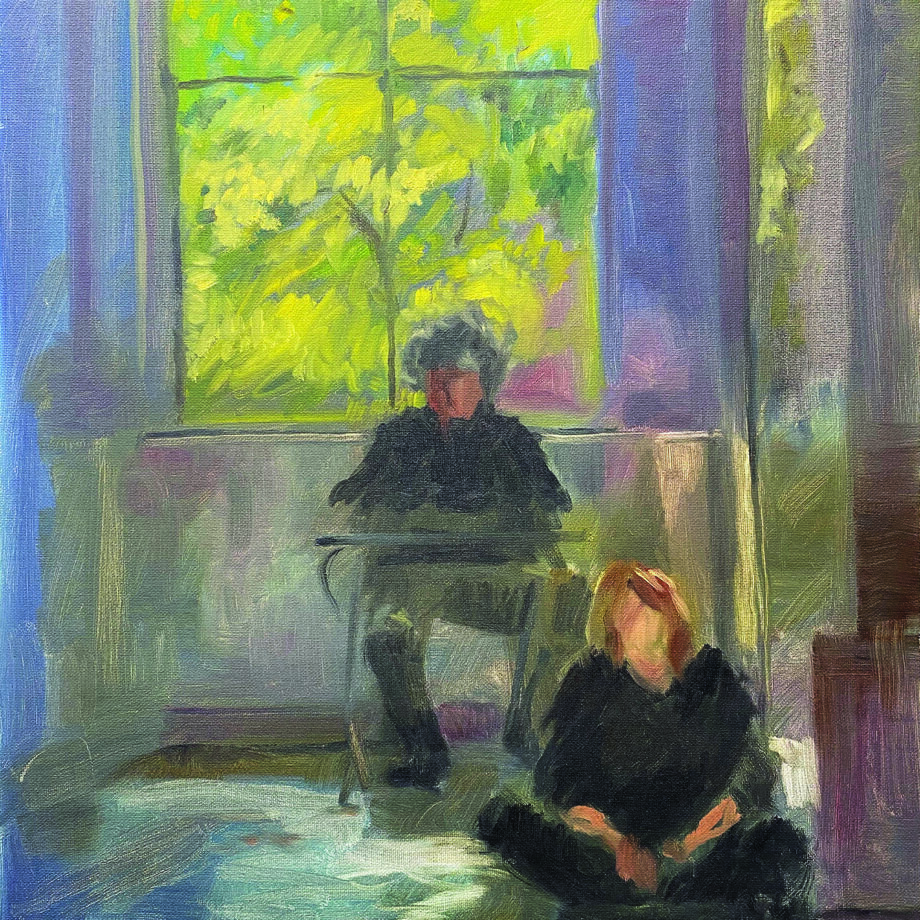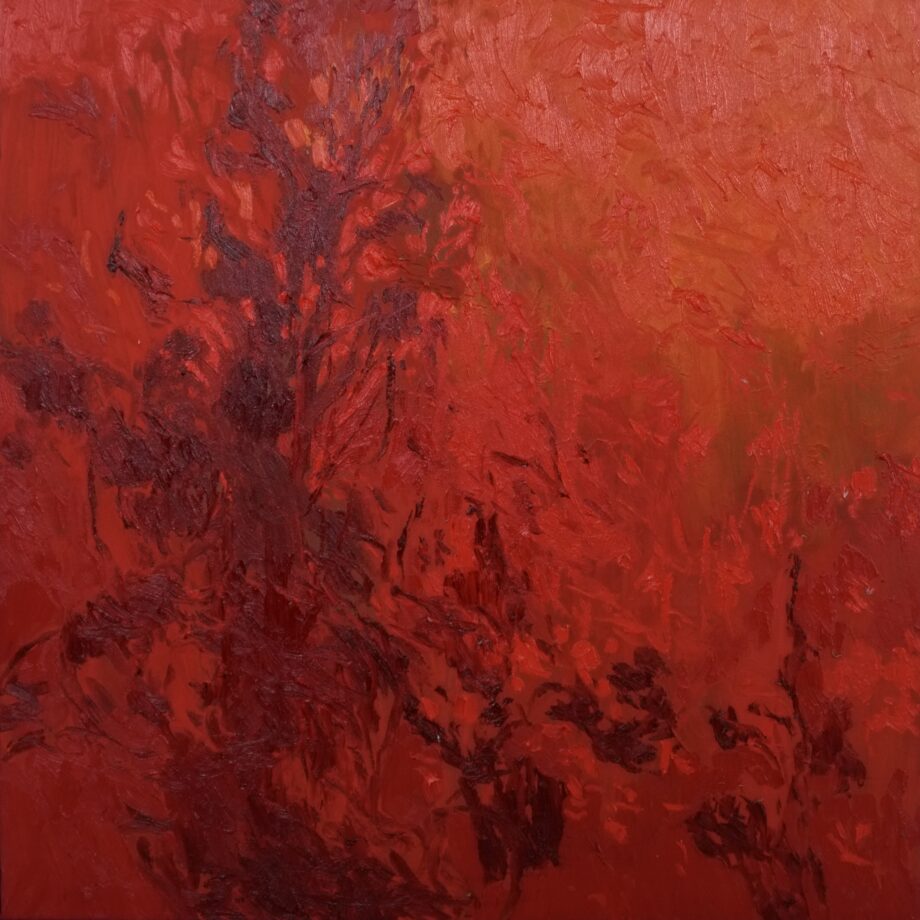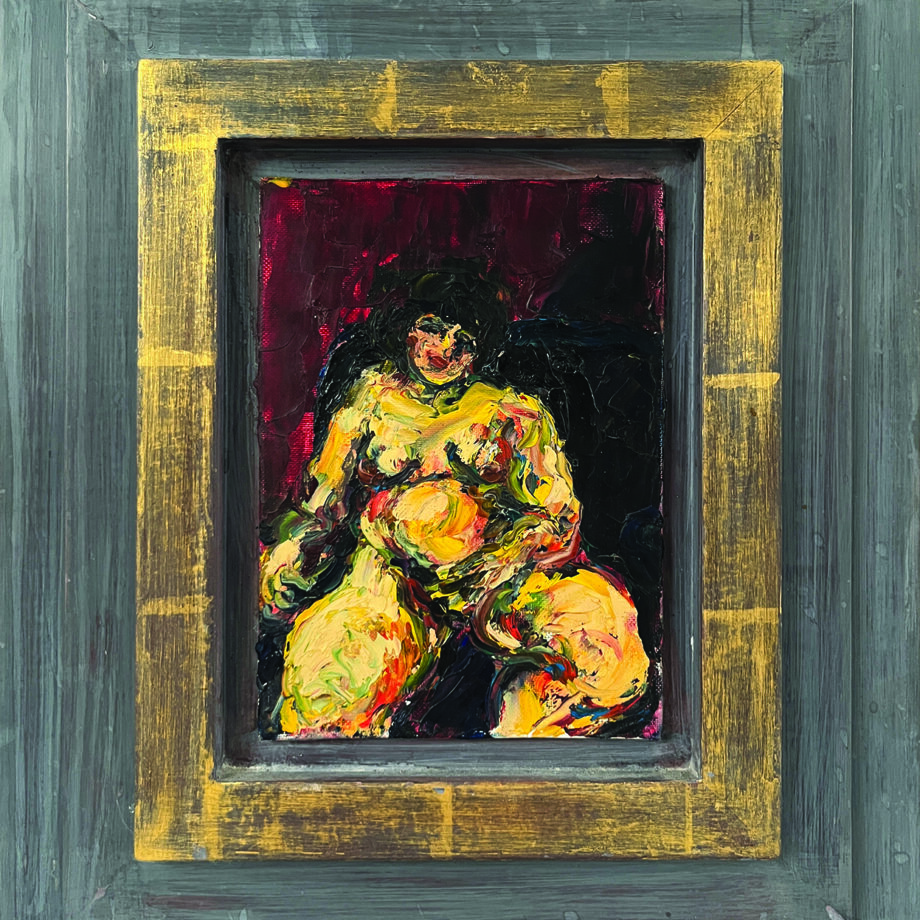
Maggi Hambling CBE is one of our greatest living artists, but it is lesser known that she is also an exceptional teacher and mentor. Maggi Hambling: Teacher – a group exhibition at Morley Gallery – celebrates her incredible legacy at Morley College London, where she has taught a painting and drawing class for 55 years. The studio, which sits directly above Morley Gallery, was officially named the ‘Maggi Hambling Studio’ in 2019, honouring her contribution to the College and the generations of students who have come under her tutelage. In light of this landmark exhibition – which includes works by students past and present, including Cecily Brown, Jelly Green and Anneka Rice, Melissa Baksh reflects on an interview with the artist, where the pair discussed Maggi’s early influences, the significance of mentorship and her time at Morley College London.
“I was inspired, first of all, by my art teacher at school. I went to Amberfield School, which I always said was where girls went if they didn’t get into Ipswich High School. But my mother said it was all meant to be because the art teacher, Yvonne Drewry, was a practising painter and a terrific artist. At 14, during an art exam, I’d done nothing but flick paint at people and draw attention to myself because I was in love with the biology mistress who was invigilating. I saw the clock; it was twenty-past three, and I knew that at half past three, I had to hand in a painting. And so, I did one. When the results came out a couple of weeks later, I was top of the class, which was quite a shock. Yvonne, who was part of the 8 + 1 Suffolk Group, once told me that “a subject chooses the artist, the artist doesn’t choose the subject,” which is how it must be. I think that a work of art can only move other people as much as the subject has moved the artist in the first place, and so one has to be vulnerable to be this channel for whatever it is has got you by the short and curlies and demands that you paint it. It can come through you onto the canvas. The subject must be in charge of every mark.


I left school halfway through A-levels, and by the age of 15, I’d taken my first couple of Suffolk landscapes to show artists Cedric Morris and Lett Haines, who had this extraordinary art school on the edge of Hadleigh where I grew up, where Lucien Freud had studied years before. Lett became my mentor. He said the most important thing that anyone had ever said to me, which is that if I was going to be an artist, I had to make my work my best friend. In other words, I could go to it with whatever I was feeling. If I was feeling tired, bored, happy, randy, miserable, whatever I was feeling, I could go to my work and have a conversation with it. That’s how I’ve lived my life.”
And what kick-started the partnership with Morley College that continues today? “It all began in the Autumn term of 1969 when I was a substitute for a substitute in the Painting department on Monday afternoons. When I started, I was younger than most of my students. I hadn’t taught anyone anything before, and I’d never had any teacher training. I’d been with my parents in Hadleigh at the weekend, and my father had grown some enormous onions. I armed myself with three very large onions and set them up on a table in the middle of the room, with the students standing in a circle around this central motif. They began to draw, and everyone was drawing the floor and the table, crowned by the onions. Everyone except a lady called Miss Mickelfield. In her drawing, there was no sign of the table, the set-up, or the room – just the onions. I asked, “What about the table and the space around it?” and she pointed at what I’d set up and said, “Piece of paper, three onions.” She then pointed down at her work and said: “Piece of paper, three onions,” which was completely unanswerable! I learnt a lot about teaching on that very first afternoon. The class seemed to be popular, and I did alternative days with my friend, the artist Jane Joseph, who had been a student at Camberwell a couple of years ahead of me. Barry Till (Principal of Morley College 1965 – 1986) realised that people seemed to like us, and the days grew into more days. Barry Till was an extraordinary man, and he gave his life to the place for twenty years. He managed to buy the pub opposite the main building and turn it into The Arts Centre, which opened in 1968, and was sponsored by the Arts Council. It was taken very seriously as an important London gallery, one of the few south of the river. In the glorious days of grants, everything took a lot more time and you didn’t expect to have an exhibition until several years after being a student. Nowadays, everything has speeded up; I get the impression that people feel they need to be seized up from their degree shows and put immediately into a gallery. Back then, we never expected any such thing. My first London exhibition was with Jane Joseph at Morley Gallery in 1973, and that led to my being in British Painting in 1974 at the Hayward Gallery. Things went on from there.”
Maggi’s vibrant portraits of Morley College staff hang prominently throughout the Waterloo Centre, including those of former Principals Barry Till and Bev Walters and former Director of Music, Sir Michael Tippet. The 1986 portrait shows the late Barry Till, a passionate advocate for adult and inclusive education, in profile. “Behind Barry hangs a very beautiful piece of velvet cloth, which I chose for the violence of its design, because with Barry, as with any principal, there are different factions all around such a person, making their demands. All the violent colours and thrusts of the cloth were an attempt to make this solid bit of stillness in the middle of all that movement amongst all the demands everyone was making upon him.

I remember during the course of painting my first portrait of Barry, I dreamt that I was dancing with him. It wasn’t a close kind of waltz or anything. It was more like rock ’n’ roll. But anyway, I was dancing with him, and this was a great optimistic kind of sign that it was all going to work. In more recent years, I moved on from dancing with a subject to actually dreaming I was painting the subject. Everything is sorted out in a dream; everything is wonderful and goes swimmingly. It’s a bit different when you wake up and you’ve actually got to do it!”
Maggi’s long-standing partnership with Morley College has enriched not only the institution, but the art world more broadly, with hundreds of artists benefiting from her expertise. What is clear from our conversation is the reciprocal nature of teaching that extends beyond the individual to culminate in community and, sometimes, friendship. “I try my best to teach in the way of giving to other people what my teachers gave me. Art is a gift from the gods that should be honoured and offered back to them. Lett had this ability to address a new person and try to bring out who they were. It’s easy to teach people to work like yourself, but it’s much more interesting, demanding and proper to try to bring out whoever they are. In my painting and drawing class, I address my ‘family’ by their surnames, and they work in silence as I encourage them to find themselves in paint. There’s no house style in my classes because I try to bring out each individual person – other than compulsory cross-dressing for performances and parties, of course.”
Known primarily for her formidable personality, veracious nature and wicked sense of humour, Maggi’s unwavering commitment to her students is a sight to behold. “It never ceases to amaze me when someone does something that is tonnes better than anything they’ve done before. It’s definitely the most gratifying thing.” And what advice does Maggi have for those at the start of their artistic journey? “They should keep a sketchbook in which they draw every day. Everyone can find half an hour to make a drawing, something from their imagination or something in front of them – it doesn’t matter. Drawing is the most intimate thing an artist does. I do it first thing every morning like a pianist practising the scales. Renewing the sense of touch every morning – that’s vital to me. And to look at great masterpieces. Encounter and experience great paintings whenever you have the chance.”
Maggi Hambling: Teacher runs until 26 March 2024 at Morley Gallery.
Written by Melissa Baksh






